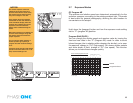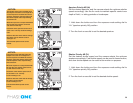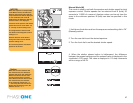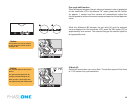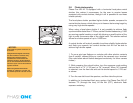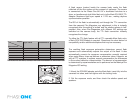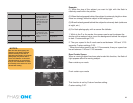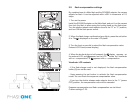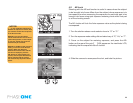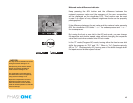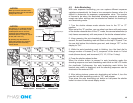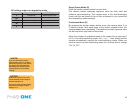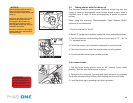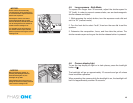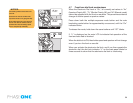
43
4.0 Advanced functions
4.1 Exposure Compensation
In some situations, such as a great difference between the subject
and background brightness or overall subject tones that will not meter
correctly because they are all black or white, the resulting photograph
may be under- or overexposed. When this occurs, use the exposure
compensation function. Exposure compensation can also be used
when you want to intentionally create overexposed or underexposed
pictures. Please keep in mind; you can do quite a lot of work using the
High Dynamic Range Tool in Capture One 4.
With the exposure compensation dial
1. When exposure compensation button A is pressed, appears
on the external LCD. When the front or rear dial is turned counter-
clockwise, the exposure is increased; conversely, when it is turned
clockwise, it is decreased. The exposure compensation value can be
checked on the external LCD or LCD inside the viewnder.
2. After taking the pictures, press exposure compensation button A
again to return the exposure compensation value to 0. The exposure
compensation value mark on the external LCD is cleared, and the
exposure compensation function is released.
NOTICE:
After taking pictures using the
exposure compensation feature,
be sure to return the exposure
compensation dial to the “0” position.
The exposure compensation dial is
locked at the “0” and positions.
The exposure compensation feature
is available during AE locked
operation.
The width of the exposure
compensation step can be changed.
Custom settings C-01.
The maximum amount of the
compensation can be set either at ±3
or ±5. Custom settings C-05.
Exposure mode Exposure compensation display
P
Program AE
The set value is displayed
Av
Aperture Value Priority
Tv
Time Value Priority
M
Manual Mode
The difference between the
metered value and the set
Exposure value is displayed
X
Sync Mode Not displayed



